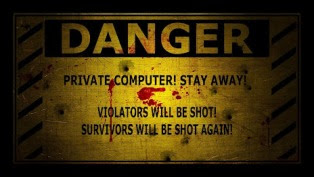Jamie Edwards' reactor was able to smash two hydrogen atoms together
This made him youngest person to create helium through nuclear fusion Fusion took place in a controlled environment at his school in Lancashire Head teacher Jim Hourigan said: 'I was a little nervous when Jamie suggested this but he reassured me he wouldn't blow the school up'
All the best school science experiments carry at least a hint of danger. But when 13-year-old Jamie Edwards informed his stunned headmaster of his plan to build a nuclear reactor in a classroom, the obvious question was: 'Will it blow the school up?
Fortunately, in a victory for the spirit of amateur scientific discovery over the health and safety culture, Jamie's promise that it was perfectly safe was believed. And yesterday he became the youngest person in the world to achieve nuclear fusion from scratch at his Lancashire secondary school, using high energy to smash two hydrogen atoms together to make helium. 'It is quite an achievement. It's magnificent really,' Jamie said afterwards.
'I can't quite believe it -- even though all my friends think I am mad.' Jamie, who attends Penwortham Priory Academy near Preston, has been fascinated with radiation for years, on one occasion even buying a Geiger counter with his Christmas money.
His fusion ambition was sparked by reading about a 14-year-old US schoolboy, Taylor Wilson, who had become the youngest to produce a small fusion reactor in Nevada in 2008.
'I looked at it, thought "That looks cool" and decided to have a go,' Jamie added. Jamie's first step was to enlist help from nuclear laboratories and university departments, but 'they didn't seem to take me seriously'.
So that left the laboratories at his school, and the task of convincing headmaster Jim Hourigan. Fortunately the head agreed, coming up with the necessary £3,000 funding.
'I was a bit stunned and I have to say a little nervous when Jamie suggested this but he reassured me he wouldn't blow the school up,' Mr Hourigan said yesterday.
After months of work, the reactor was finally completed just ahead of his 14th birthday this weekend.
And yesterday, in a 'radiation controlled area' in a classroom, before an audience of experts, he flicked a switch and stared intently at his Geiger counter until it registered that fusion had indeed taken place -- or created 'a star in a jar', as Jamie refers to it.
Nuclear fusion, the reaction that powers the sun, is very different from nuclear fission, or the splitting of the atom, that occurs in nuclear power stations and is the stuff of atom bombs.
However, both release vast amounts of energy.
Scientists around the world are replicating Jamie's experiment, but on a much bigger scale, in the hope of using it on a large scale to fuel cheap, environmentally-friendly power stations. Jamie said: 'I heard the Geiger counter rapidly go up and I was "What is that?",' he said in the afterglow of success.
'Then I looked over and the neutron counter was right up off the scale nearly, and I thought "We must have done it".
The experiment was assisted by electronics experts who tested the apparatus for safety, while Jamie, his friend George Barker and the teachers involved had all attended a risk assessment course at a nuclear fuel company.
For his next project, Jamie -- who wants to be a nuclear engineer or work in theoretical physics -- has his sights set on building a miniature hadron collider.
Χανιά: Κραυγή αγωνίας για την αδέσποτη βόσκηση – Τί καταγγέλλουν στην
Εισαγγελία
-
Με απειλές, εκφοβισμούς, καταστροφές περιουσιών, ανεξέλεγκτη βόσκηση,
εμπρησμούς και επιθέσεις καταγγέλλουν ότι βρίσκονται οι κάτοικοι της
Κισσάμου. Ειδι...
Πριν από 1 λεπτό


















































Δεν υπάρχουν σχόλια:
Δημοσίευση σχολίου